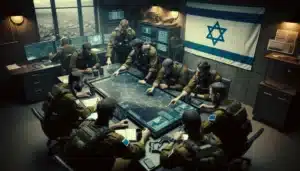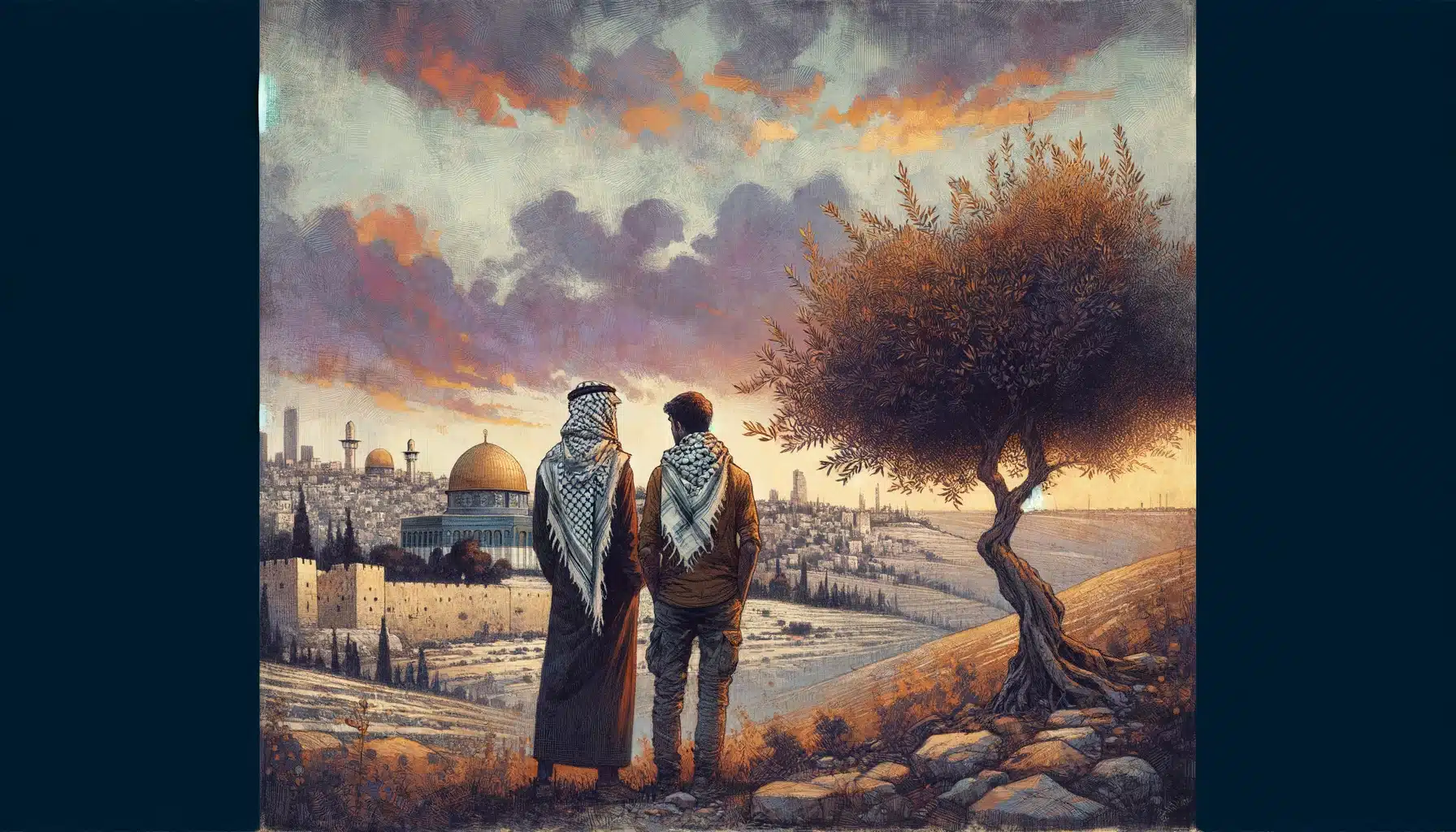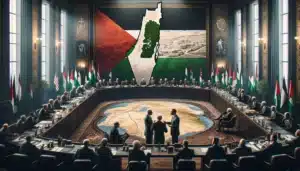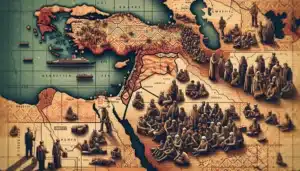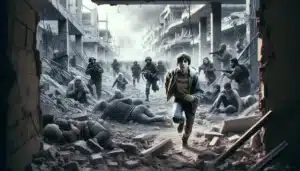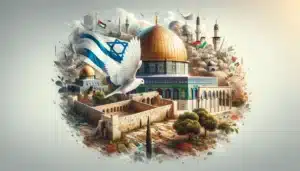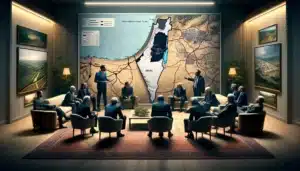Introduction: The Unfolding Drama of Palestinian Politics
In the labyrinth of Middle Eastern geopolitics, the longstanding conflict between Hamas and Fatah not only shapes the internal dynamics of Palestinian politics but also casts a long shadow over the broader Israeli-Palestinian conflict. As 2024 unfolds, the rift between these two dominant Palestinian factions remains a pivotal subplot in the quest for peace and stability in the region. This article delves into the historical intricacies, current tensions, and the potential path towards reconciliation between Hamas and Fatah, against the backdrop of an increasingly complex geopolitical landscape.
The Historical Roots of the Rivalry
Fatah, a principal player in the Palestine Liberation Organization (PLO), has been at the forefront of Palestinian nationalism since the 1960s. Its approach blends negotiation and resistance, aiming at establishing a Palestinian state through political channels and limited armed struggle. The seeds of discord between Hamas and Fatah were sown long before their public confrontations became a staple of Middle Eastern politics.
In contrast, Hamas emerged in the late 1980s during the First Intifada. Its ideology, deeply rooted in Islamic principles, advocates for the liberation of Palestine through armed resistance. The stark differences in ideology, strategy, and end goals have fueled a rivalry that has often erupted into violent clashes, notably in 2007, leading to a de facto division of Palestinian territories, with Hamas controlling Gaza and Fatah administering the West Bank.
The Impact of the 1948 Arab-Israeli War and Subsequent Conflicts
The 1948 Arab-Israeli War, a pivotal event in Middle Eastern history, laid the groundwork for the enduring conflict between Israel and Palestine, significantly influencing the trajectories of Hamas and Fatah. The aftermath of the war saw hundreds of thousands of Palestinians displaced. The State of Israel was established, and Palestinian territories fragmented. This period became central to Palestinian national identity and resistance. Subsequent conflicts, such as the Six-Day War and the First and Second Intifadas, further complicated the political landscape. They shaped the strategies and positions of both Fatah and Hamas.
Diverging Paths: Governance, Ideology, and International Relations
The governance styles of Hamas and Fatah are as divergent as their foundational ideologies. Fatah’s control of the Palestinian Authority (PA) has been characterized by efforts to engage with international diplomacy and negotiations with Israel. Despite frequent setbacks and criticisms of corruption and inefficiency, they persist. On the other hand, Hamas’s governance in Gaza has been marked by strict Islamic rule and a focus on armed resistance. This has led to international isolation and devastating conflicts with Israel.
These differences extend to their international relations. Fatah has sought to gain support from Arab states and Western countries, aiming to bolster its legitimacy and financial backing. Conversely, Hamas has found allies in countries like Iran and Turkey, drawing on shared ideological principles and opposition to Western influence in the region.
Continuing the Discourse: The Role of External Actors and Peace Efforts
As we delve deeper into the intricacies of the Hamas and Fatah conflict, it becomes evident that external actors play a significant role. Moreover, various peace efforts over the years have sought to bridge the divide between these two factions. These efforts have experienced varying degrees of success and failure.
External Actors and Their Influence
The geopolitical landscape of the Middle East is a tapestry woven with the threads of international interests, alliances, and interventions. In the context of the Hamas and Fatah conflict, several key external actors have emerged as influential:
- The United States and the European Union: Historically, these Western powers have supported the Palestinian Authority and Fatah, viewing them as key partners in the peace process with Israel. Their financial aid and political backing, however, have been contingent upon Fatah’s commitment to non-violence and negotiation.
- Iran and Qatar: These countries have provided support to Hamas, drawn by the group’s resistance ideology and its stance against Israel. Iran, in particular, has been a significant supplier of financial and military aid to Hamas.
- Israel: As the other principal party in the Israeli-Palestinian conflict, Israel’s actions and policies significantly impact the dynamics between Hamas and Fatah. Israel’s blockade of Gaza, military operations, and settlement expansions have often exacerbated tensions.
Efforts Towards Reconciliation
Several attempts at reconciliation between Hamas and Fatah have been made, highlighting the complexity and challenges of achieving lasting peace within Palestinian politics. Key efforts include:
- Mecca Agreement (2007): Aimed at ending violent clashes in Gaza and forming a unity government.
- Cairo Agreement (2011): A renewed attempt to form a unity government and hold elections.
- Beirut Agreement (2017): Focused on enabling the Palestinian Authority to assume control in Gaza.
Despite these efforts, substantial obstacles remain, including deep-seated mistrust, ideological differences, and external pressures.
Exploring the Path Forward: Analysis and Potential Scenarios
Looking ahead, the path to reconciliation between Hamas and Fatah is fraught with complexities. Yet, it is a critical step towards achieving a unified Palestinian front, essential for advancing peace talks with Israel. The following table outlines potential scenarios and their implications:
|
Scenario
|
Description
|
Implications
|
|
Successful Reconciliation
|
Hamas and Fatah form a unity government and agree on a political strategy.
|
Could lead to a stronger Palestinian position in negotiations with Israel.
|
|
Status Quo Persists
|
Attempts at reconciliation fail, and the factions remain divided.
|
Continues to hinder the peace process and exacerbates the humanitarian crisis in Gaza.
|
|
Escalation of Conflict
|
Increased tensions lead to renewed violence between Hamas and Fatah.
|
Further destabilizes the region and diminishes prospects for peace.
|
Navigating a Complex Terrain
In short, the Hamas and Fatah conflict remains a significant barrier to peace in the Israeli-Palestinian conflict. The path to reconciliation is intricate. It involves resolving internal differences and addressing external interests in a complex geopolitical context. In 2024, the international community must support initiatives fostering unity, democracy, and peace for Palestinians and the region.
For further insights into the Israeli-Palestinian conflict and its broader implications, explore Geopolitics Journal’s comprehensive analysis.
Unveiling the Path to Peace: The Palestinian Road Ahead
In the intricate mosaic of Middle Eastern politics, the reconciliation between Hamas and Fatah stands as a cornerstone for the future of not just the Palestinian territories but also for the broader peace process in the region. The year 2024 has seen these factions at a crossroads, with historical grievances and political divisions casting long shadows over their relations. Yet, amidst these challenges, the prospect of unity offers a glimmer of hope for peace and stability. This section aims to explore the implications of their conflict. It also examines potential pathways towards reconciliation. These pathways are illuminated by the broader context of the Israeli-Palestinian conflict.
The Broader Implications of Intra-Palestinian Unity
The unity between Hamas and Fatah transcends beyond mere political reconciliation; it is pivotal for the peace process with Israel and for the Palestinian quest for statehood. A unified Palestinian front could potentially:
- Strengthen Palestinian negotiating power in peace talks with Israel.
- Enhance the implementation of humanitarian aid and development projects in Gaza and the West Bank.
- Foster a more cohesive national identity among Palestinians, crucial for nation-building efforts.
The Role of International Community and Peace Initiatives
The international community’s role in fostering a conducive environment for Hamas and Fatah reconciliation cannot be overstated. Through diplomatic support, financial aid, and mediation, global powers and regional actors have a critical part to play. Notable efforts include:
- The United Nations’ peacekeeping and mediation initiatives, which offer a neutral platform for dialogue (UN News on Palestine).
- The Council on Foreign Relations provides an in-depth analysis of Hamas, highlighting the complexities of engaging with the group in peace processes (CFR – Hamas).
- Human rights organizations like B’Tselem report on the conditions in the occupied Palestinian territories, underlining the urgent need for a resolution to the conflict (B’Tselem).
Conclusion: A Glimpse into the Future
As we look towards the horizon, the path to reconciliation between Hamas and Fatah, fraught with obstacles and opportunities, is emblematic of the broader struggle for peace in the Middle East. The journey is complex, requiring patience, compromise, and the courage to envision a future beyond the immediate divisions. The international community, along with the Palestinian people, must navigate these turbulent waters with a clear-eyed understanding of the stakes involved. The road ahead is not merely about negotiating peace but about building it, brick by brick, towards a future where prosperity and harmony in the region can finally flourish.
Incorporating insights from authoritative sources like Al Jazeera’s coverage of Palestine (Al Jazeera – Palestine Decade) and the Institute for Middle East Understanding’s analysis of Fatah and Hamas (IMEU), enriches our understanding of the Palestinian narrative and the imperative for peace.
As the dialogue continues, both within Palestinian society and the international arena, the hope for a united Palestine remains a beacon of possibility. The reconciliation between Hamas and Fatah is not just a political necessity but a moral imperative, paving the way for a future where peace is not just imagined but realized.
